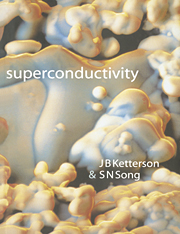A preface is supposed to alert potential readers to the contents and style of what lies within so they can decide whether to proceed further. Superconductivity is now a vast subject extending from the esoteric to the very practical; the people who study or work on it have different preparations, goals, and talents. No treatment can or should address all these dimensions.
Part I is devoted to the phenomenological aspects of superconductivity, e.g., London's and Pippard's electrodynamics, the Ginzburg–Landau theory and the Landau Fermi liquid theory. These theories allow a discussion of the effects of magnetic fields, interfaces and boundaries, fluctuations, and collective response (which may all be thought of as different manifestations of inhomogeneities).
Since there is currently much interest in unconventional (non-s-wave) superconductivity, we have included a discussion of the associated Ginzburg–Landau theory (which then has a multidimensional, complex order parameter). He is the only established example of an unconventional superfluid (triplet p-wave) and therefore our discussions of this substance are somewhat longer.
Part II is devoted to the microscopic theory of uniform superconductors: the theory of Bardeen, Cooper, and Schrieffer (BCS) and the Bogoliubov–Valatin canonical transformation, where the latter so greatly simplifies the discussion of excited states and finite temperature effects. Although not strictly a uniform-superconductor phenomenon, the theory of tunneling and the accompanying Josephson effects are also discussed in Part II.
